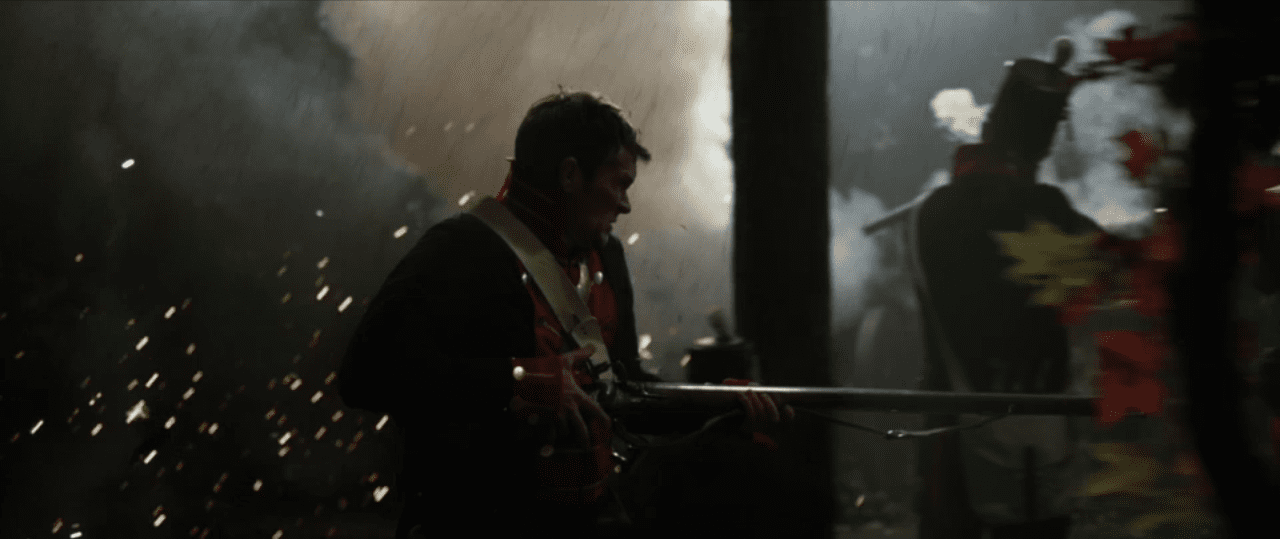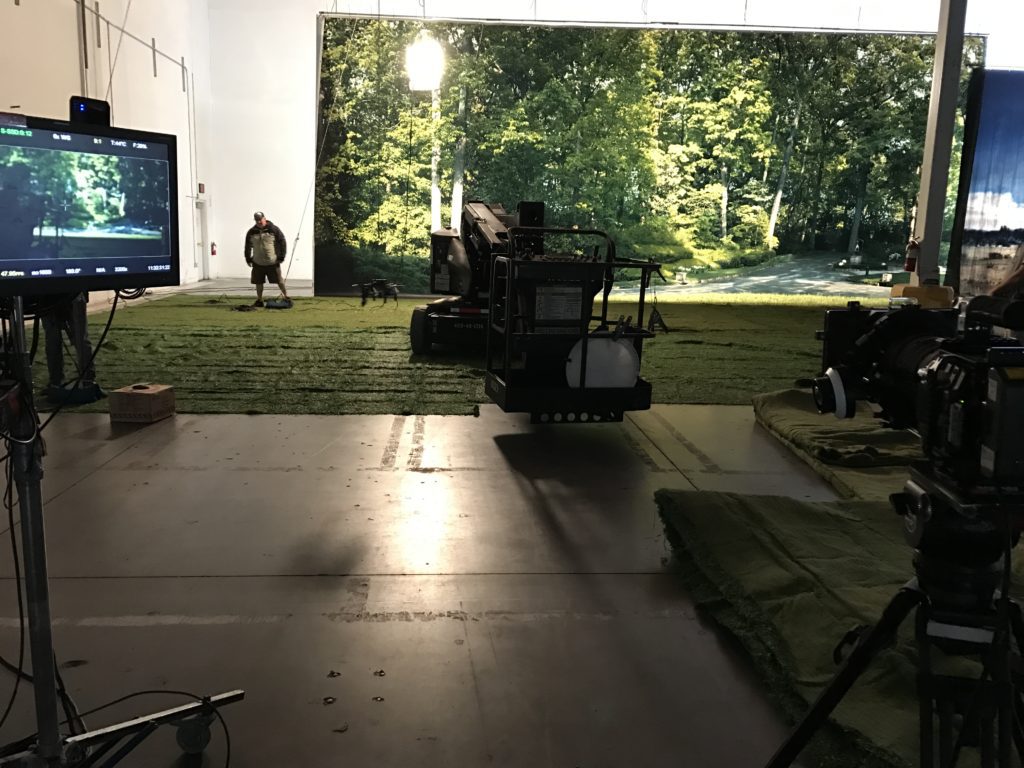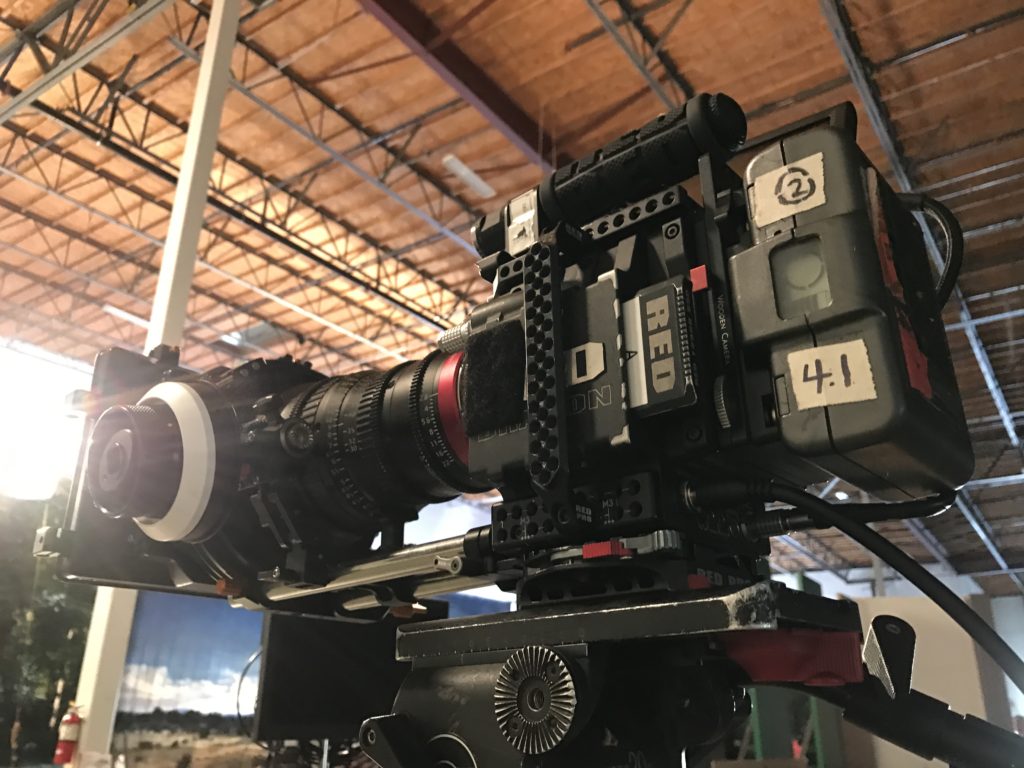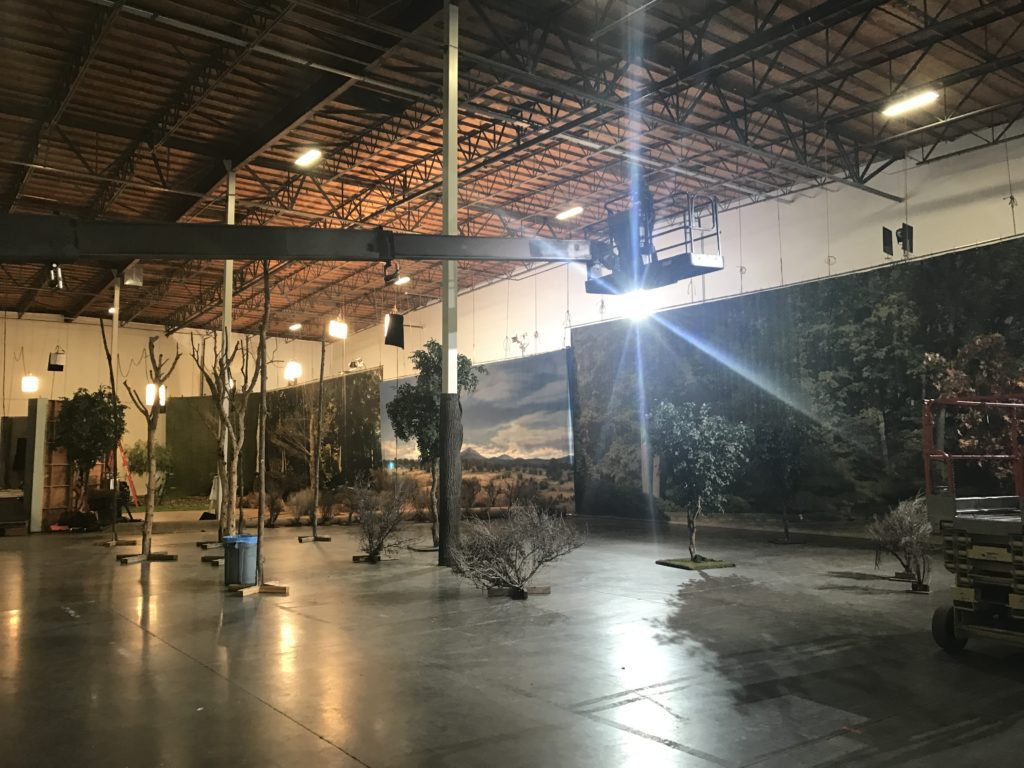

The Feature production for Super Bowl LI ,”Ragged Old Flag” was set to the famous song by Johnny Cash, written in 1974 against the backdrop of the Watergate scandal. It tells the story through the “eyes” of an American flag and all of the trials, tribulations, and triumphs it endured throughout American history. The exciting challenge was to convey the powerful historical events portrayed in the song and juxtapose with them a modern narrative that would resonate with today’s audience.
The most ambitious and technically formidable portion of the shoot became known as “The Battle Scene”. The goal was to cover the War of 1812, the Battle of the Alamo, and the Civil War in a single, seamless take with no editing whatsoever. There were no soundstages available that were big enough to house the 200 plus feet of backdrops, props, scenery and a large scale interior re-creation of the Alamo itself, so a massive warehouse had to be converted into a studio. Over 300,000 watts of lighting, over 40 extras, period costumes, pyro, explosions, weapon specialists, hundreds of pounds of dry ice, hazers, rain bars, and lightning units were employed to accomplish this task. The camera essentially acted as a voyeur, traveling on a high tech gimbal system through the various battle vignettes. It was shot on a Red Dragon camera with 6,000 lines of resolution in widescreen mode and with a Leica 35mm prime lens for the maximum cinematic effect. Gun shots, cannon fire, and mortar explosions all had to be synchronized with elaborate camera and actor movement to maximize their impact on screen, while still maintaining the highest of safety standards. Perhaps the most complex task for this scene was lighting the set to match a particular F-stop as it’s a single take going through changing lighting environments from dusk to day, culminating in a dark night filled with fog, rain, and lightning.
Additionally, the camera team had to devise unique ways to protect the camera from the elements without sacrificing mobility or quality. Rubber mats were placed under the low lying fog to map the course for the camera and actor, and rain deflection was created on the camera system to minimize water and pyro from impacting the shot. The Alamo set was elevated four feet in the air to accentuate the downward firing angle that was present during that battle, so ramps with foot grip systems were created for the Director of Photography to move up and down the sets. Shot at 48 frames-per-second to add a touch of drama in slight slow motion, the entire take had to be accomplished in under 20 seconds, while maintaining perfect focus at a very shallow depth of field. After two full days of building and rehearsing, several great takes were accomplished.


Another difficult sequence comes towards the end of the feature when our lead male, Nate Boyer, changes from civilian clothes to his Army uniform in one shot. The camera moves past Nate in his street clothes, then makes an almost 90 degree turn to reveal him now in his uniform, and then carries him backward as Nate moves forward. Again shooting at 48 frames-per-second on a Red Dragon with a 25mm Leica prime lens on a Ronin Gimbal system, the camera had to move very fast, only allowing a few seconds for the wardrobe change. In the end-shot, the transition is seamless.The production featured an array of some of the best filmmaking tools in the industry including DJI Ronin Gimbal systems, MYT Works Sliders, Sachtler Tripods, Bartech Wireless Focus Systems and Teradek Wireless Video systems just to name a few.
Other than a few pieces of historical news footage, Fox shot every frame for this feature. Most scenes were shot at dusk to match the time at which the piece was airing (4:52pm CT).
This feature was relatively easy to edit because most of the work went into planning and executing the camera work.
We were so honored to be a part of this very special project and to get the chance to work with such a great team. Producer – Jen Pransky Director of Photography – Jonathan Belinski Set Designer – Laurent Turlure Gaffer – Chris Andrus Line Producer – Pepper Carlson Editor – Mikey Carr






